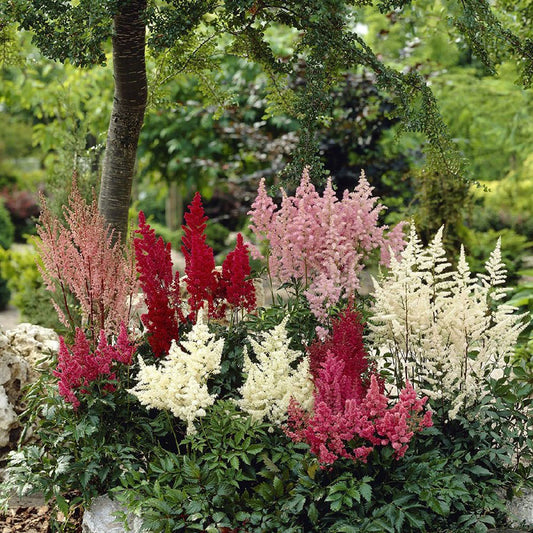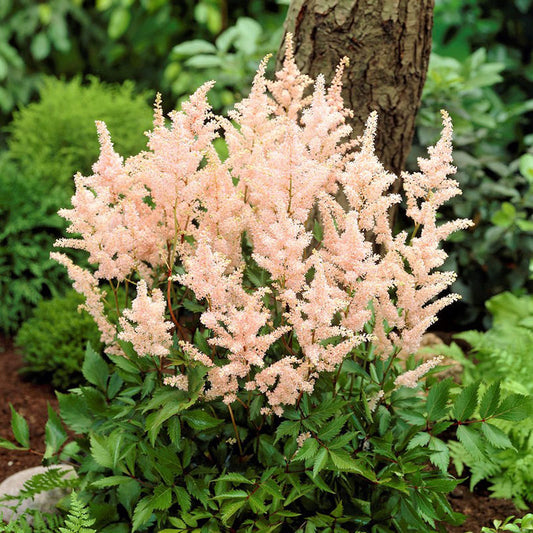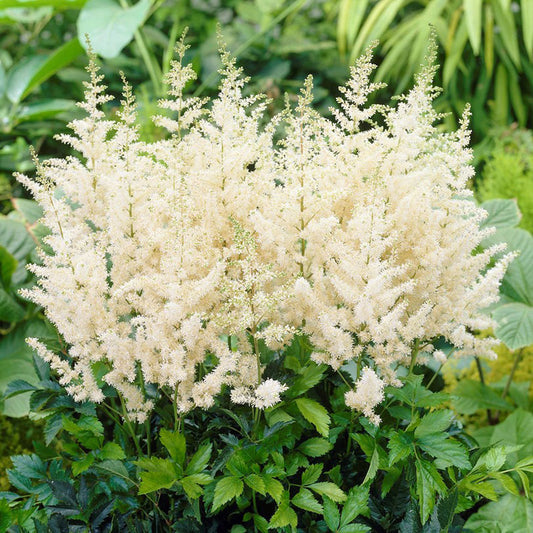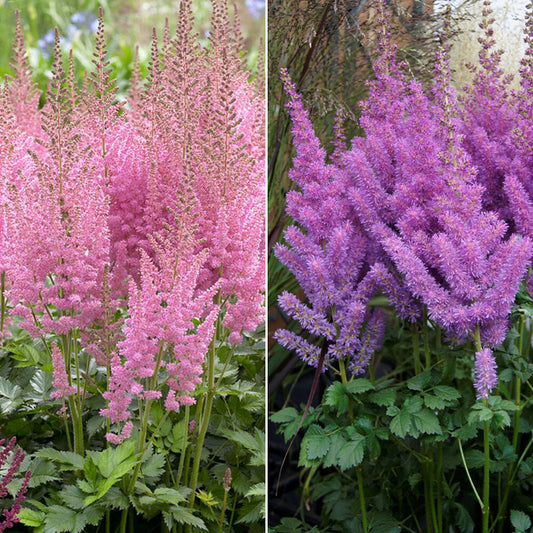-
main-collection-product-grid

Astilbe Roots - Mix
Plant this shade-tolerant native perennial to attract bees and butterfliesOut of StockAstilbe Roots - Mix
Plant this shade-tolerant native perennial to attract bees and butterfliesRegular price As Low As $27.59Regular priceUnit price per$36.79Sale price As Low As $27.59Out of Stock -
main-collection-product-grid

Astilbe Roots - Peach Blossom
The shade-tolerant perennial's feathery spires are a pollinator favoriteOut of StockAstilbe Roots - Peach Blossom
The shade-tolerant perennial's feathery spires are a pollinator favoriteRegular price As Low As $19.72Regular priceUnit price per$26.29Sale price As Low As $19.72Out of Stock -
main-collection-product-grid

Astilbe Roots - Diamant
Cream-colored fluffy spires add texture to cut flower bouquetsOut of StockAstilbe Roots - Diamant
Cream-colored fluffy spires add texture to cut flower bouquetsRegular price As Low As $19.72Regular priceUnit price per$26.29Sale price As Low As $19.72Out of Stock -
main-collection-product-grid

Astilbe Roots - Pink & Purple Mix
Long-lasting feathery plumes, plus deer and rabbit resistantOut of StockAstilbe Roots - Pink & Purple Mix
Long-lasting feathery plumes, plus deer and rabbit resistantRegular price As Low As $24.44Regular priceUnit price per$32.59Sale price As Low As $24.44Out of Stock
What we love about growing astilbe
- Bright and showy bee and butterfly attractor
- Long-lasting large, fluffy, feathery plumes
- Low-maintenance
- Wonderful cut flowers
How to grow astilbe or false goatsbeard flowers
Often called False Goatsbeard or False Spirea, Astilbe is native to the mountain ravines and woodlands in Asia and North America. These hardy perennials have been cultivated by gardeners for many years for their fern-like foliage and feathery plumes of brilliantly colored flowers that dance in the breeze. Below the flowers grows lush green foliage that adds an airy quality. Some species of Astilbe even have a pleasant and strong aroma. There are over 25 different varieties of Astilbe, assuring there is a color and characteristic for any garden.
What are companion plants for astilbe?
If you have a shaded spot where you are hoping to plant astilbe, it pairs well with hostas and ferns. For sunnier areas, peonies, salvia and other sun-loving perennials make good companion plants. With its long-lasting flowers, astilbe is also a great addition to bee and butterfly gardens. Astilbe make excellent border plants, and is a great candidate for mass planting that really makes a bold statement. Astilbe also makes wonderful pond-side plants, providing an inviting habitat for dragonflies and hummingbirds. Regardless of where you decide to plant, astilbe is sure to brighten and dress up any space in your yard.
Proper care for astilbe or false goatsbeard
Planting and growing is easy provided that the proper location is selected. With the right conditions, astilbe will thrive and provide a whimsical look to your planting area. When choosing a location, it is a good idea to select soil that is loose and high in organic matter. Adding compost is a good way to improve the soil, while helping to retain moisture. Once you have selected the perfect variety and appropriate location, plant your roots in holes that are about twice as wide as the roots and about 4 to 6 inches deep. The tops of the roots should be about one inch below the soil line. Be sure to provide enough water for your plants. We recommend watering your astilbes deeply when the soil appears dry. Some gardeners like to apply a liquid fertilizer in June and July to speed up growth. Established plants can be divided after about four years. DIviding and replanting helps to prevent overcrowding.
For more information about planting, growing, and caring for Astilbe roots, see our Astilbe Bulbs Planting Guide.



